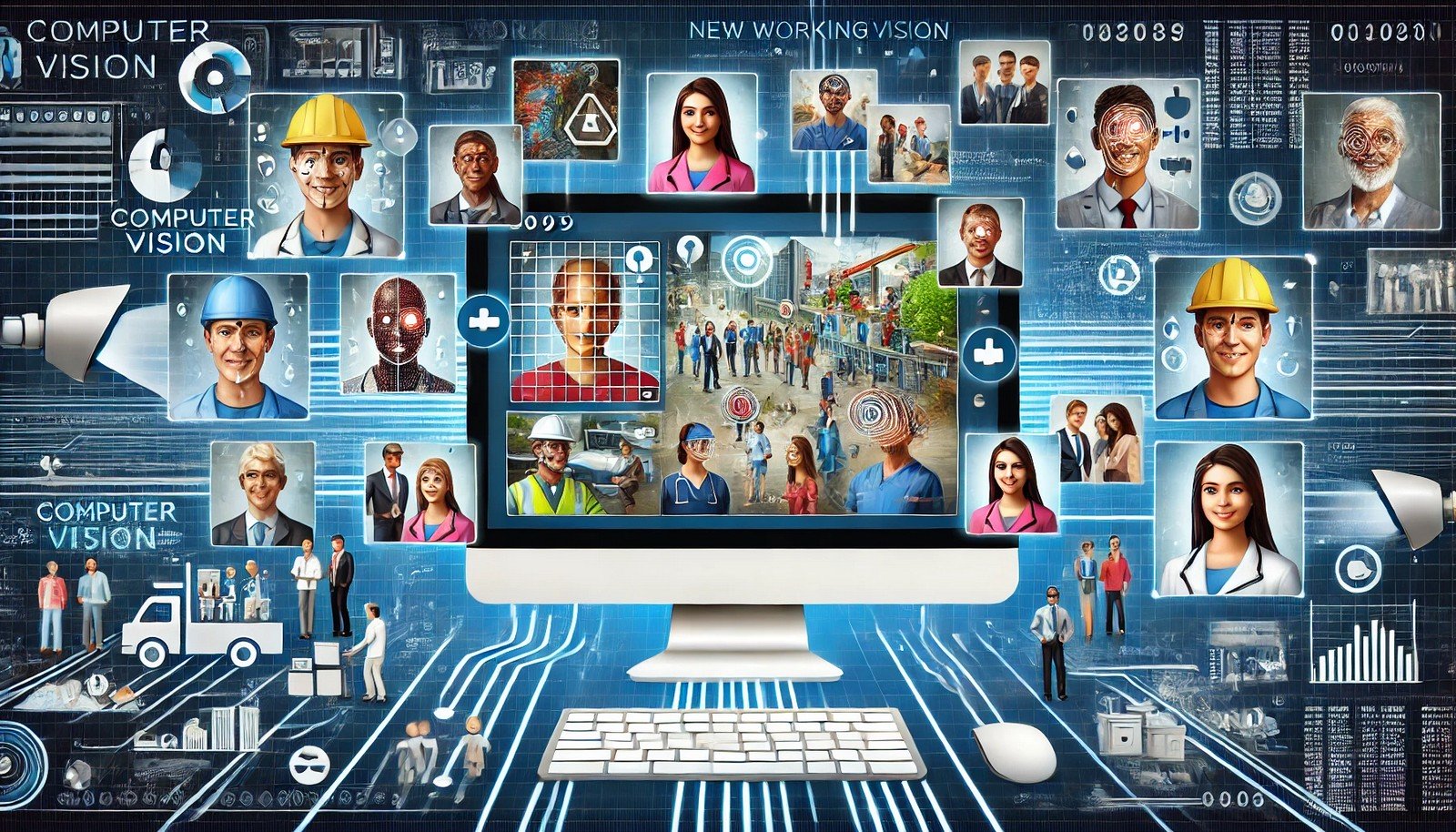Computer Vision

Quick Navigation:
- Computer Vision Definition
- Computer Vision Explained Easy
- Computer Vision Origin
- Computer Vision Etymology
- Computer Vision Usage Trends
- Computer Vision Usage
- Computer Vision Examples in Context
- Computer Vision FAQ
- Computer Vision Related Words
Computer Vision Definition
Computer Vision is a field within artificial intelligence (AI) that enables computers and systems to derive meaningful information from visual data, such as images and videos, and take action or make decisions based on that information. Technically, computer vision involves analyzing patterns within visual data to understand and interpret its contents. Key methods include deep learning, machine learning, and neural networks, which allow systems to distinguish objects, track movement, identify faces, and perform image processing at high accuracy and speed.
Computer Vision Explained Easy
Imagine you have a camera that can see and understand what’s happening. Computer Vision is like giving a computer eyes, so it can "see" pictures, people, or things and know what they are, like recognizing your dog in a photo or spotting a car on the road. It’s how computers help us with tasks like sorting photos or finding faces in videos—pretty much like magic eyes for computers!
Computer Vision Origin
Computer Vision originated in the 1960s as a branch of AI aimed at helping computers interpret and understand visual data. Early research focused on simple recognition tasks, but rapid advancements in computing power, algorithms, and neural networks in the 2000s propelled its development. Today, Computer Vision is foundational in fields like autonomous driving, healthcare diagnostics, retail, and security.
Computer Vision Etymology
The term "Computer Vision" combines "computer," from Latin computare (to calculate), and "vision," from Latin visio (sight or seeing), signifying a technology where machines can "see" or interpret visual data.
Computer Vision Usage Trends
Computer Vision has become increasingly prevalent with the rise of digital imagery and data. Its applications span industries such as automotive, healthcare, retail, and public safety, where it enables object recognition, video analysis, medical imaging diagnostics, and more. Modern Computer Vision systems are now capable of achieving human-like accuracy, making it a cornerstone technology in AI.
Computer Vision Usage
- Formal/Technical Tagging: Image processing, object detection, deep learning, neural networks, visual recognition, AI.
- Typical Collocations: Image analysis, facial recognition, visual data interpretation, video analytics, object classification, autonomous driving.
Computer Vision Examples in Context
- Autonomous vehicles use Computer Vision to detect obstacles, lane markings, and traffic signals, enhancing road safety.
- In healthcare, Computer Vision assists in diagnosing diseases by analyzing X-ray images and MRI scans with higher accuracy.
- Social media platforms use Computer Vision algorithms for photo tagging and content moderation to ensure community guidelines are met.
Computer Vision FAQ
- What is Computer Vision used for?
It’s used for tasks like image recognition, facial recognition, and medical imaging. - How does Computer Vision work?
It processes images through algorithms that detect patterns to interpret and understand the visuals. - Is Computer Vision a type of AI?
Yes, it’s a branch of AI focused on visual understanding. - Can Computer Vision recognize emotions?
Yes, advanced systems can analyze facial expressions to determine emotional states. - What are common algorithms in Computer Vision?
Convolutional Neural Networks (CNNs) and deep learning algorithms are common. - Does Computer Vision require a camera?
Yes, it requires visual data from sources like cameras or images. - How is Computer Vision different from image processing?
Computer Vision interprets images, while image processing focuses on enhancing images. - Is Computer Vision used in social media?
Yes, it’s used for features like facial recognition and content moderation. - How accurate is Computer Vision?
With current technology, it can achieve near-human accuracy in many tasks. - Is Computer Vision safe?
Yes, it’s safe when used responsibly but raises privacy considerations.
Computer Vision Related Words
- Categories/Topics: Artificial Intelligence, Machine Learning, Robotics, Data Science, Autonomous Vehicles.
- Word Families: Visual perception, machine vision, neural network, deep learning, data analysis.
Did you know?
Computer Vision powers technologies we use every day, like the face unlock feature on phones and even retail checkout-free systems. Fun fact: Google's AI used computer vision to help preserve historic art by identifying patterns and restorations needed in priceless paintings.
PicDictionary.com is an online dictionary in pictures. If you have questions or suggestions, please reach out to us on WhatsApp or Twitter.Authors | Arjun Vishnu | @ArjunAndVishnu

I am Vishnu. I like AI, Linux, Single Board Computers, and Cloud Computing. I create the web & video content, and I also write for popular websites.
My younger brother, Arjun handles image & video editing. Together, we run a YouTube Channel that's focused on reviewing gadgets and explaining technology.



Comments powered by CComment